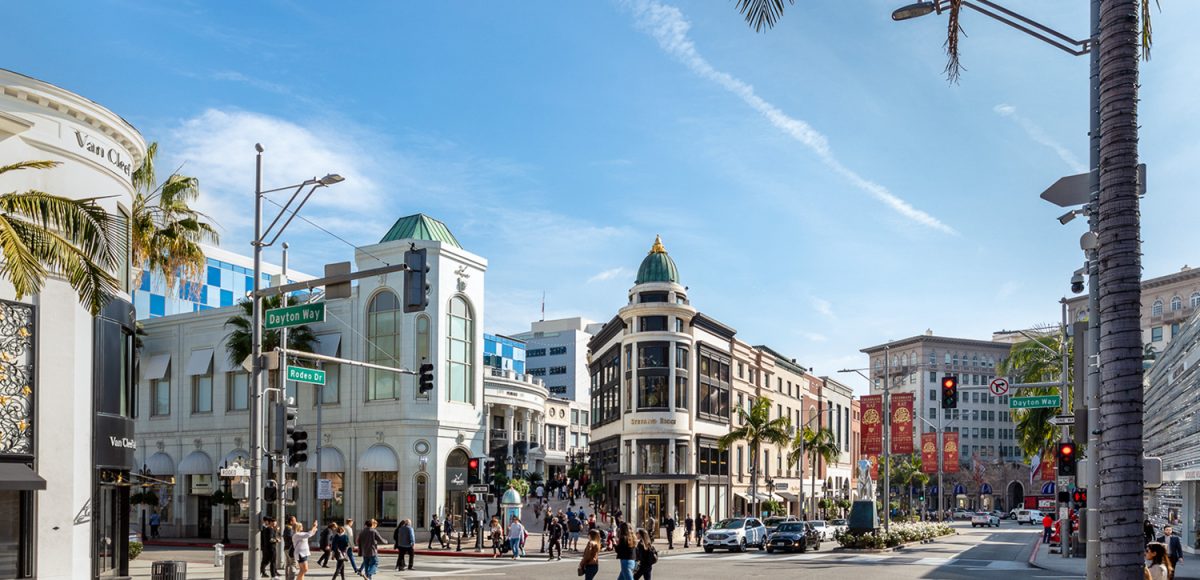In observance of Pedestrian Safety Month, the Beverly Hills Police Department is joining with law enforcement agencies across the country in launching an educational campaign designed to teach the public safety best-practices for walking and driving. This comes amid two trends: a rise in interest in outdoor activities amid COVID-19 restrictions, and a sharp rise in pedestrian fatalities both locally and nationally.
“More people are out walking, exercising, and doing what they can to spend a little time outdoors after spending so much time staying at home,” Beverly Hills Police Department Police Chief Dominick Rivetti said in a statement. “Looking out for one another is the least we can do during these difficult times.”
Since 2019, California has seen a dramatic surge in the number of pedestrians killed or injured in car-related incidents, comprising 25 percent of all roadway deaths. A report compiled by the Governors Highway Association (GHSA) earlier this year projected that pedestrian deaths reached their highest point in more than 30 years.
The report laid out a grim picture. From 2009 to 2018, “the number of pedestrian fatalities increased by 53 percent (from 4,109 deaths in 2009 to 6,283 deaths in 2018).” By comparison, the number of people who died from all other traffic-related causes only rose by 2 percent. Using preliminary data collected by all 50 states and the District of Columbia, the report projected that 2019 would see an estimated 6,590 pedestrian deaths, which would represent the “largest annual number of pedestrian fatalities in the U.S. since 1988.”
The report attributed this trend to multiple factors, “including economic conditions, population growth, demographic change, weather, fuel prices, the amount of motor vehicle travel and the amount of time people spend walking.”
“Other factors contributing to the recent rise in the overall number of pedestrian fatalities could include the increasing shift in U.S. vehicle sales away from passenger cars to light trucks (with light trucks generally causing more severe pedestrian impacts than cars), warmer weather and the large growth in smartphone use (which can be a significant source of distraction for all road users),” the report read.
To combat these numbers, BHPD has detailed suggestions for both pedestrians and drivers to improve safety and lower the chance of accidents.
For both, they urge those behind the wheel or using their legs to put aside distracting technology. According to the National Highway Traffic Safety Administration, distracted driving claimed 2,841 lives in 2018–1,730 drivers, 605 passengers, 400 pedestrians and 77 bicyclists. For obvious reasons, distracted driving poses a considerably greater threat to pedestrians than distracted walking. In a review of national data, local reports and public health studies, a report by the New York City Department of Transportation found that “distracted walking” did not contribute to pedestrian fatalities.
“Cell phone use by pedestrians does not appear to be disproportionately contributing to fatal pedestrian crashes,” the report stated. “In short, despite growing concerns, DOT found little concrete evidence that device-induced distracted walking contributes significantly to pedestrian fatalities and injuries.”
The Beverly Hills Police Department also recommends that pedestrians always use marked crosswalks, establish eye contact and nod or wave at drivers, and take extra precautions at night (when the majority of pedestrian fatalities happen). The suggestions acknowledge that pedestrians may have to step onto the street briefly to maintain social distancing at times. In those instances, BHPD advises that pedestrians look both ways.
For drivers, on whom the burden rests more heavily, BHPD recommends slowing down on busy streets and intersections, paying extra attention when approaching crosswalks, avoid blocking crosswalks when making a right-hand turn, and remember to turn on headlights at night.







